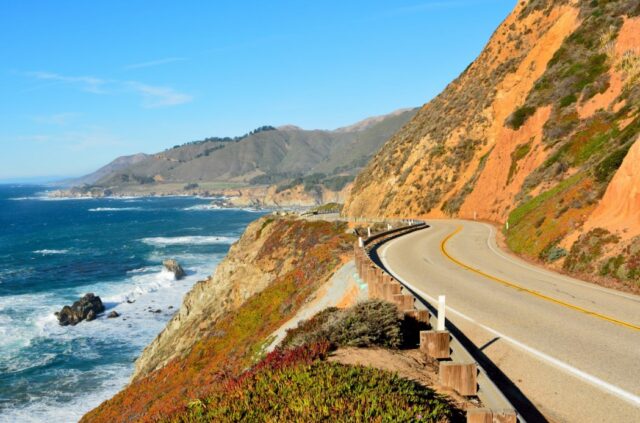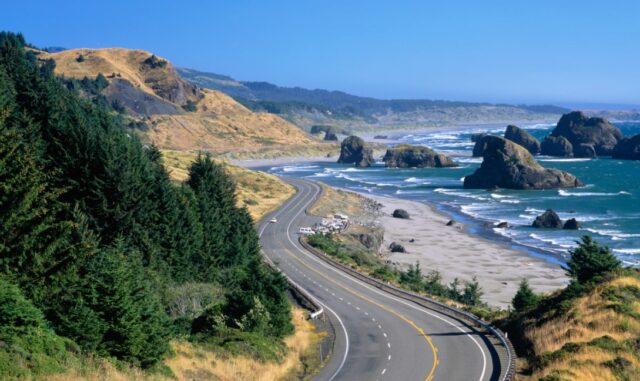
Have you ever been seized by the enchantment of embarking on a road trip across the United States? The prospect is undeniably romantic; the US has a diverse array of cities, climates, cultures, and geography.
However, the Great American Road Trip, as enticing as it might be, requires a depth of planning that goes beyond simply charting a route on a map. What, then, are the critical factors to mull over before starting the engine and setting off on this once-in-a-lifetime adventure?
Navigating the Varied Traffic Laws
The United States is a vast federation of fifty distinct realms, each with its own laws and statutes. As a result, a road trip across the US presents an intricate web of varying traffic laws to consider. While certain fundamental rules remain consistent nationwide, various differences emerge like speed limits, phone usage, and seat belt requirements.
Notably, speed limits vary significantly across states. It’s legal to go 85 mph on a Texas highway, while the top speed in the nation’s capital is capped at 55 mph. Being well-informed about these changes not only guarantees a smooth journey but also saves you from falling afoul of the law.
Another point of divergence is mobile device usage while driving. The majority of states ban texting and driving. However, some states allow hands-free usage, while others, like Montana, do not have a specific ban on phone usage while driving. It’s crucial to familiarize yourself with these regulations to avoid any unwelcome surprises.
Understanding the Penalties for Reckless Driving

Safe and responsible driving should be the unspoken rule for every road trip. However, just as traffic laws differ from state to state, penalties for reckless driving also show marked variation. Understanding these penalties beforehand not only ensures a trouble-free journey but also encourages a sense of responsibility behind the wheel.
Driving under the influence (DUI) is an example of where significant disparities emerge in terms of legal repercussions. The penalties for first-time DUI offenders vary from state to state; for instance, the Arizona interlocks statute requires those convicted of a DUI to have a breathalyzer installed in their vehicle at their personal expense. In contrast, a first-time offender in Pennsylvania may face a one-year license suspension, fines, and mandatory alcohol highway safety school.
While the specific penalties differ, the message is clear: DUI is a dangerous act with severe consequences, and it’s a definite no-no for anyone venturing out on a road trip across the United States.
Keeping Your Vehicle in Top Shape
Ensuring the proper maintenance of your vehicle is paramount for a successful road trip. Given the significant distances and geographical diversity of the United States, your vehicle will be your most trusted companion, and keeping it in peak condition is essential.
Regular oil changes, brake checks, and tire rotations are crucial preventative measures that can save you from potential trouble. Keeping a close eye on the health of your vehicle’s battery, particularly in colder regions, can be the difference between a memorable journey and a stranded traveler’s tale.
Flat tires are a common occurrence when traversing across great distances. A well-stocked emergency kit, including a spare tire, jack, and tire iron, is a non-negotiable necessity. Being well-prepared can transform a potential road trip disaster into a minor, albeit adventurous, pitstop.
Embrace the Journey, Not Just the Destination

The Great American Road Trip isn’t just about reaching your destination; it’s also about the journey itself. In the pursuit of covering ground as fast as possible, it’s easy to miss the myriad of smaller, lesser-known wonders nestled between iconic cities and landmarks.
This American adventure affords the opportunity to stop and smell the roses. Seek out local eateries, hidden natural wonders, and quirky roadside attractions that might not feature in a standard tourist guide but offer authentic experiences. Allow yourself to be flexible, to take that unplanned detour, to make unexpected discoveries.
Choosing the Right Route
The United States is a smorgasbord of geographical diversity, and your chosen route can significantly influence the flavor of your road trip. While the iconic Route 66 offers a comprehensive look at Americana, the Pacific Coast Highway showcases breathtaking coastal scenery.
In the northern reaches, the Great River Road along the Mississippi River offers a unique perspective, as does the Atlantic Coast drive from Florida to Maine. Each route, laden with its unique charm and character, guarantees a different set of experiences. Unless you’re lucky enough to have the time and resources to do them all in a single trip, we suggest taking the time to choose the right one for your travel goals.
Anticipating the Diversity of Climate and Geography

The United States is a country of striking geographical and climatic contrasts, from the snow-capped peaks of the Rockies to the arid expanse of the Mojave, from the humid subtropics of Florida to the cold tundra of Alaska. An understanding of these climatic variations can not only enhance your experience but also prepare you for the practical challenges they present.
If your journey includes passing through high-altitude regions, prepare for thinner air and potentially harsher UV radiation. In desert regions, extreme daytime heat can quickly give way to chilly nights, necessitating appropriate clothing and hydration measures. Conversely, in northern states, particularly in winter, sub-zero temperatures can impact both you and your vehicle, requiring suitable clothing and specific vehicle preparations.
Being aware of seasonal weather patterns, such as hurricane seasons on the Atlantic and Gulf coasts or wildfire seasons in the West, allows you to plan your trip accordingly, ensuring safety and continuity of travel. With a bit of research and proper preparation, you can confidently meet the climatic challenges that each region presents.
Accounting for Budget and Expenses
Undoubtedly, embarking on a cross-country journey requires financial planning. From fuel costs to accommodation, from food expenses to unexpected costs like vehicle repairs, mapping out a budget beforehand is a wise step.
Fuel costs can significantly impact your road trip budget as gas prices fluctuate from state to state. We advise estimating the mileage that comes with your itinerary and calculating the likely fuel expenses accordingly. Many smartphone apps can help track the best gas prices along your route or EV charging station planning for trips in electric vehicles.
Accommodation options can range from budget motels to campsites to more upscale hotels. Booking in advance, especially during peak tourist seasons, can help secure good deals and ensure a comfortable night’s rest.
Consider setting aside a contingency fund for unexpected expenses like vehicle breakdowns or medical emergencies. In essence, a well-planned budget can go a long way in ensuring a stress-free, enjoyable road trip.
Preparing for Your American Adventure

As you venture to traverse the continental expanse of the United States, equipped with the spirit of exploration and spontaneity, remember that effective preparation is a key ally.
From understanding varied traffic laws to practicing safe driving, from ensuring optimal vehicle maintenance to choosing the perfect route, every detail contributes to the making of a memorable journey. The Great American Road Trip, with all its promise of adventure and discovery, awaits. Are you ready?







